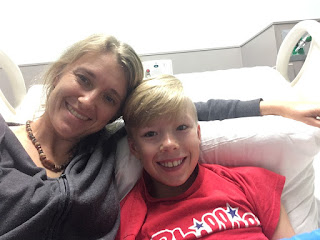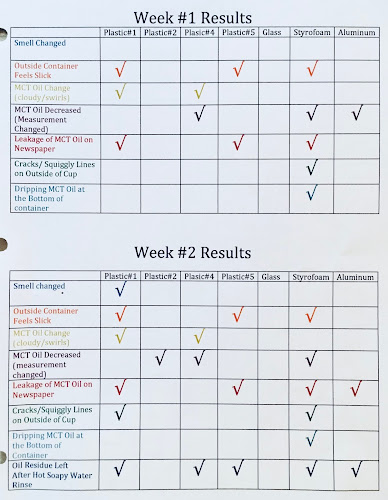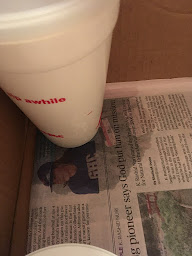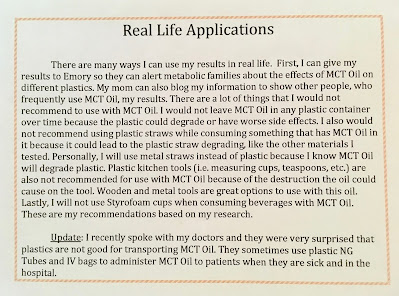On the one hand, you know you have visited the hospital a
little too often when you can write a blog comparing your different
stays…hoping to learn from your previous experiences to make your next stay
better. On the other hand, I
recognize that compared to some kids with Fatty Acid Oxidation Disorders,
Christopher’s hospitalizations have been relatively few! I am extremely grateful for the
countless times Christopher has been able to fight illness without a hospitalization! And yet, just three weeks ago we found
ourselves unexpectedly at the hospital once more. As we left, I had to ask myself, “What made this visit feel
so much easier?”

First, the
clinicians listened! Even if you
have never experienced a hospital stay, I am sure you can imagine how
challenging it is when you have doctors on your team that are not hearing you
out. I try to keep in mind, during
our hospital stays, that doctors are human and that I have no clue what went on
in their day…but let’s be honest, when Christopher is having muscle breakdown
(rhabdomyolysis) my guard is up and I am ready to fight for whatever he needs to
make him better. A common tension amongst
families of children or adults with a rare chronic condition is that families often
know more about the condition than the doctor. This is by no means an insult to all of the schooling
doctors go through!! How could I
expect a doctor to stay up to date on the latest LCHADD information when there
are only 6-8 kids in the entire state of Georgia with it! I feel like the doctors and I do a
dance when we first meet, when Christopher is admitted to the hospital. They are trying to see what I know, and
I am trying to see if they are willing to listen.
The fifth floor doctors at Eagleton Children’s Hospital this visit were
amazing! They treated me like I
was a team member. They ASKED
Christopher and I questions, AND LISTENED! They were even honest that they had never met a child with
LCHADD. All of this created
wonderful patient/doctor report!
Plus there were the little things that showed they cared: They requested a “My Special Body” book
and wanted Christopher to sign it!
The nurse figured out how to get Christopher hard-boiled eggs by
creating a “medical order” with the cafeteria. The doctors not only followed my son’s protocol letter but
also helped coordinate care by reaching out to his pediatrician! All of these actions helped calm my
anxiety about Christopher’s care, and allowed me to focus on just being my
son’s mom during this stay.

Second, the stay felt easier because I packed a lot of Christopher’s own
food!
It may sound crazy, but
after Christopher had dark urine (a sign of muscle breakdown) and I spoke with
his doctors about bringing him in, the first thing I did was start packing food
I knew he could eat.
One of the
hardest challenges with past hospitalizations was that we were so limited with
what Christopher could order from the cafeteria.
After Christopher has rhabdomyolysis, it is really important
that he is eating well and getting high protein/complex-carbohydrate meals that
are still low in fat.
With this in
mind I packed: greek yogurt, low-fat ham, Ezekiel bread, tortillas (I had just
made), beans and rice, and fresh fruit.
This fore-thought gave us so much more wiggle room with the timing of my
phone calls down to the cafeteria and took away the stress of not knowing if I
would have
what Christopher needed
nutritionally,
when he needed it! Ultimately,
we used the hospital meals to supplement what we couldn’t pack from home.
When I showed up in the ER with a large
cooler I got a lot of curious looks, but it was worth it!
 |
| Playing x-box with his buddy Ireon! |
Christopher’s outlook was a bit different than mine, but in true kid
fashion. First, he loved that he
“got to rest” because “my legs were so tired”. He thought it was really cool that he got to enjoy “x-box”
and visit the hospital’s library.
We watched movies together, a soccer game, read…and he even had a couple
visitors! Wheeling him around the courtyard or playing piano in the chapel
broke up the day tremendously.
Hospital stays are not all the
same. They are a lot harder when
he is having muscle breakdown due to a viral infection. Not only is it scarier (cause you never
know when those cks will peak and what other damage may occur), but he has to
be confined to his room so as to protect other patients. Anyone confined to one room for 3-5
days is bound to go stir crazy!
For
those of you new to the LCHADD world I know you are wondering why these kids
end up in the hospital so much, or perhaps you are wondering how Christopher
landed in the hospital this go around.
For kids with fatty acid oxidation disorders (like LCHADD), when they
get sick and are fighting viral infections their body cannot use their fat as
energy. So if they go through all
of their sugar stores, their body will try to use the fat for energy but when
it can’t it will start to break down the muscle instead. This muscle breakdown leads to toxic
by-products in their blood, such as myoglobin. These toxic by-products are really hard on your kidneys and
liver. The treatment is to
increase their calorie intake and start over-hydrating to try to flush the
toxic by-products in their blood stream. This is done through oral hydration,
IV, N-G tube, and/or G-tube depending on the situation. Depending on how much muscle breakdown
Christopher has experienced, and the cause, sometimes we can treat him from
home. Unfortunately, the only way
to know exactly how much muscle breakdown he is experiencing is by getting a
blood draw.
Muscle break down can occur for these kids for a couple different
reasons. Sometimes it occurs if
they get a viral illness with fever, and are unable to eat. Other times they might play really hard
at a sporting event/recess and not consume enough calories or maintain
hydration as well as they thought.
Other moments there is what we consider the “perfect storm” of
events. Perhaps, it was a super
amazing day! Your child eat as
he/she normally would have but unbeknownst to anyone they used more energy at
the playground, and then they were hitting a growth spurt, and they were
excited for the birthday party after school. All of these things effect your metabolism and calories
needs, but it is super hard to know when your child is hitting another growth
spurt or how to compensate for excitement or stress. All these things together can lead to muscle breakdown. Then there are times when kids go into
rhabdomyolysis and there is nothing as a parent you can pin-point. Those are the hardest moments.
 |
| Christopher back at school with his friends! |
|
This
last episode for Christopher, we were never able to pinpoint one particular
event that led to his muscle breakdown.
The resident doctor kept talking about Christopher’s “fantastic”
day!
I loved the way he put this,
because there was no blame or judgment in his tone for this episode.
He helped Christopher embrace the
beauty of his day with the unexpected consequences.
Yes, Christopher had a busy day on October 6, 2018!
He got to spend all day with dad at
school in his gym, played a short game of soccer with his friends in the
afternoon, enjoyed a Nerf battle with his buddies during a sleepover and was
looking forward to his best friend’s birthday party the next day!
He stayed “fueled” up very well through
all of this!
Was this a lot?
Yes.
Has he had “fantastic” days before and not had muscle
breakdown? Yes.
What sent him over
the edge?
Growth spurt?
Stress?
Excitement?
The
doctors told me I will drive myself crazy if I try to figure out why in this scenario.
And so, I have chosen this time to let
the “why” go, throw the reasoning out the window, embrace his “fantastical
day,” and feel grateful for a peaceful hospital stay.






























